The purpose of this article is to discuss a couple of amazing vintage 3 Fonteinen bottles that I was graciously offered to taste recently, as well as to tell you about the superb Restaurant 3 Fonteinen in Beersel. The 3 Fonteinen cafe was opened in 1962 at Herman Teirlinckplein 3 in Beersel, and is now owned by Guido Debelder, brother of Armand Debelder. Armand and Guido took over as lambic blenders from their father Gaston in 1982. In fact, Gaston turned over both the blendery and the cafe to run to sons Armand and Guido that year. Later, the 3 Fonteinen cafe was converted into a full service restaurant. More on that below.
Thomas Debelder, son of Guido Debelder and nephew of Armand Debelder, currently co-manages Restaurant 3 Fonteinen, with his father Guido and his mother, Trees Vergels. Thomas and Guido were present during my most recent visit on Monday, December 9th, 2019.
A little background on 3 Fonteinen is in order before we proceed further. Brouwerij 3 Fonteinen is one of most storied and hallowed lambic makers in Belgium. “The Three Fountains” was a cafe and a lambic blendery run by Gaston Debelder and his wife Raymonde, beginning in 1953. It wasn’t until late 1998 that a small brewery was added, and brewing began in 1999. This brewery existed until 2009. Even during those years, most of 3 Fonteinen’s lambics came from the wort produced at three lambic breweries: Boon, Girardin, and Lindemans. 3 Fonteinen received wort from these breweries the day after it cooled overnight in the respective breweries’ coolships, and pumped the cooled wort into their own barrels for aging to produce superb lambics, which could later be blended with lambics of different ages to produce Oude Geuze, or steeped with fruits such as cherries and raspberries to make fruited lambics.
A new brewery was added at the lambic blendery location in Beersel in 2012, and brewing commenced in 2013. Brouwerij 3 Fonteinen now has a much larger location in Lot, called De lambik-O-droom, only 4 km from Beersel, with a tasting room, lots of barrel aging space, and a shop, which opened in 2016. See this previous article about that new location. An expansion of that facility next door is planned to start in the Autumn of 2020. For full details about that, see this article. For a look at two brewing days at 3 Fonteinen, see this article here.
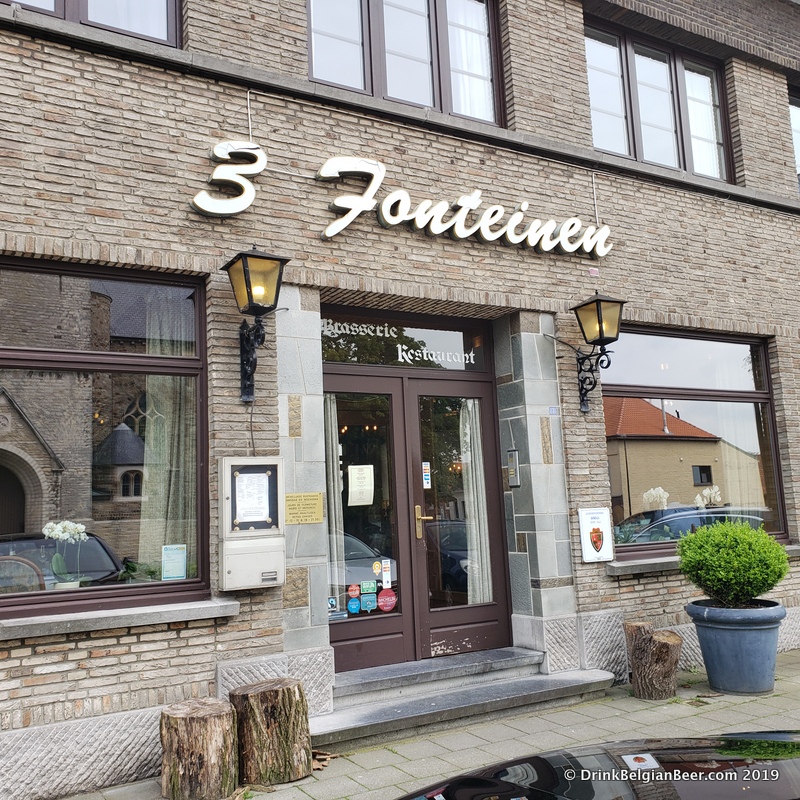
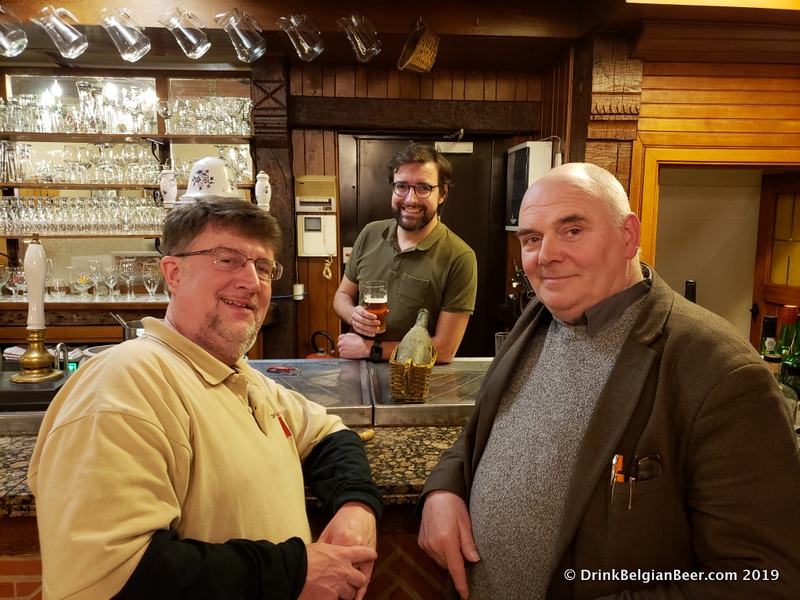
Thomas says about the history of Restaurant 3 Fonteinen: “My grandfather, Gaston Debelder, and his wife Raymonde, took over an inn that had a lambic blendery in 1953, which was then located at Hoogstraat 13, Beersel. He renamed it “3 Fonteinen” and started to blend lambic in the ‘50s. As a lambic café from 1953, 3 Fonteinen served sandwiches with plattekaas, omelettes, and some other small snacks. Later, in 1961, Gaston bought the location were the restaurant is right now. After some renovation, he opened a cafe in 1962. In 1982, my father Guido Debelder and uncle Armand Debelder took over, later transforming the cafe more into a full service restaurant. In the mid 1990’s, two other locations in Beersel were rented as a warehouse for barrel aging/bottling and bottle conditioning. In 1998, Guido and Armand bought and installed a 700 liter brewery, together with Willem Van Herreweghen. In 2001, my uncle Armand started his own business.” This business became what we now know as Brouwerij 3 Fonteinen. Note that 3 Fonteinen, or “Three Fountains” is a reference to the hand pumps that were used to serve three beers at the original cafe: lambic, kriek, and faro.
Thomas added: “Armand went to hotel school, and is a trained chef, so beginning in the 1980’s, he transformed the kitchen into one that produced a more refined cuisine, by placing the focus on lambic cuisine. That is what we’ve served ever since. Nowadays, we try to simplify it a bit more, trying to bring a simple and pure cuisine, based on the best ingredients, sourced as locally as possible. My mom runs the kitchen as a chef today. She’s into a healthier, no nonsense cuisine. For example, we changed almost all of the refined sugars we used to local honey.”
Thomas Debelder is a big fan of lambic beers. This is not surprising, given that lambic seems to run in the blood of the Debelder family. “I started drinking lambic and working at the restaurant at a young age. I later went to HORECA school (Note: this stands for Hotels, Restaurants, and Cafes) to learn how to manage a restaurant. After completing my studies, I began working full time in the restaurant in 2009,” Thomas remarked. He added: “I started co-managing Restaurant 3 Fonteinen with my parents in 2013.”
Stu Stuart’s “BelgianBeerMe!” beer tours always visit Restaurant 3 Fonteinen for a group meal during the “Wild and Spontaneous Beer Tour of Belgium” on odd numbered years, when Tour de Geuze is held. So, I have met Thomas in the restaurant a number of times, but it was always when he was quite busy. Luckily, he had a rare Sunday off on December 8, and attended the superb De Gebrande Winning Beer festival 2019: ‘Circus’-edition in Sint-Truiden. Thomas and I savored some great lambic and fruit blends from the superb Bokke, as well as a new lambic blending star, Bofkont (More on that in a future article.)
So I made plans to visit Restaurant 3 Fonteinen the next day, on Monday, December 9. (Note that the restaurant is closed on Tuesday, Wednesday, and Thursday. Opening days are Friday through Monday from noon to 2:30 pm and 6 pm to 9:30 pm.) Knowing my love of vintage lambics, Thomas opened up a 1989 3 Fonteinen Framboos, pulled directly from the brewery’s cellar. It was truly stellar: with evident lambic funk, a mild tartness, and a refined fruit character from the raspberries.
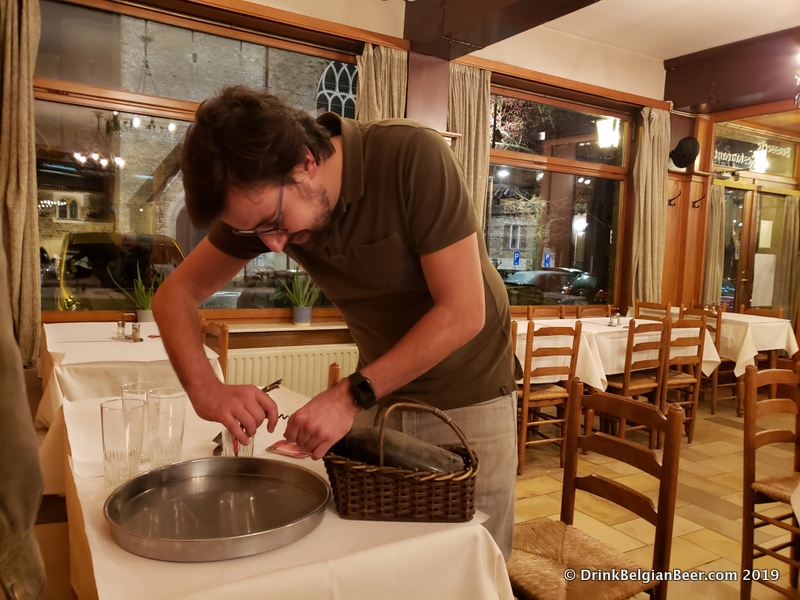
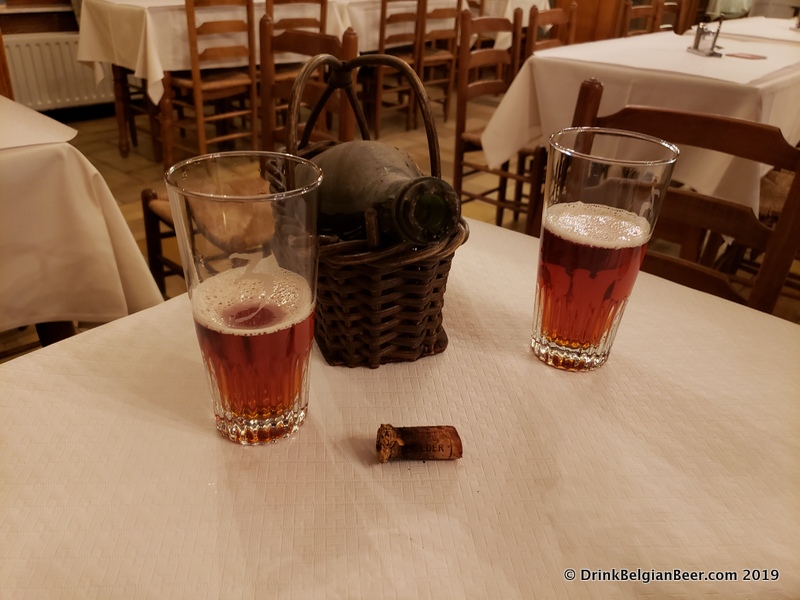
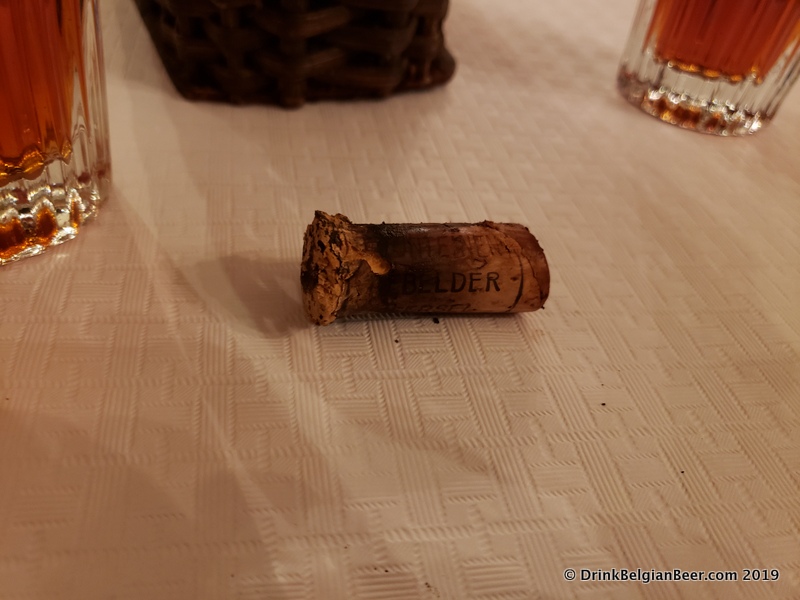
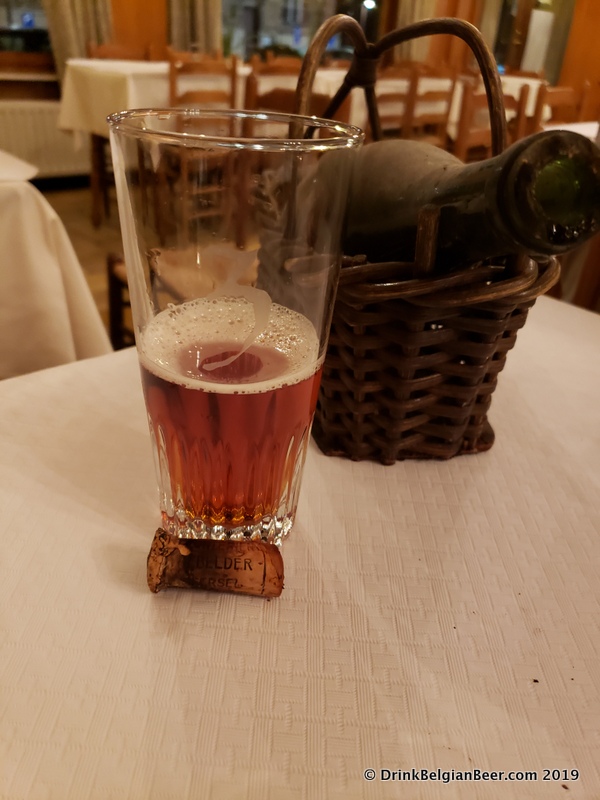
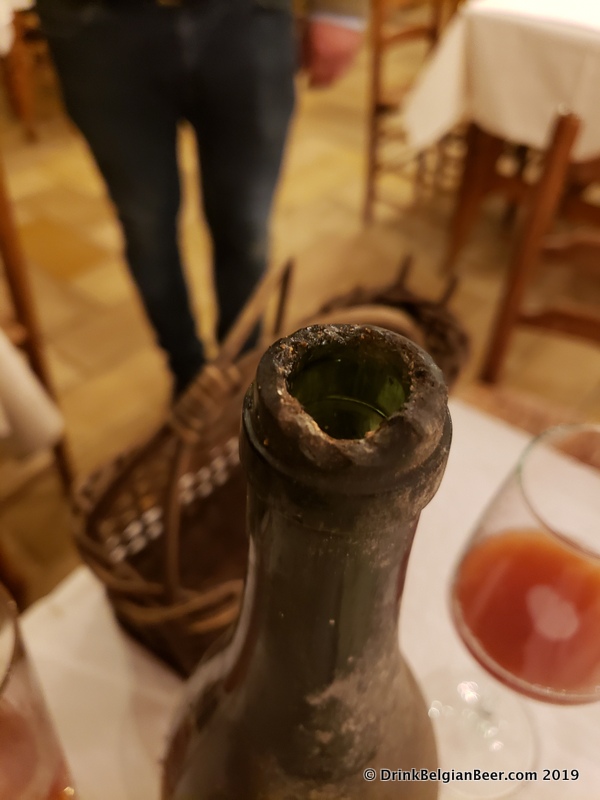
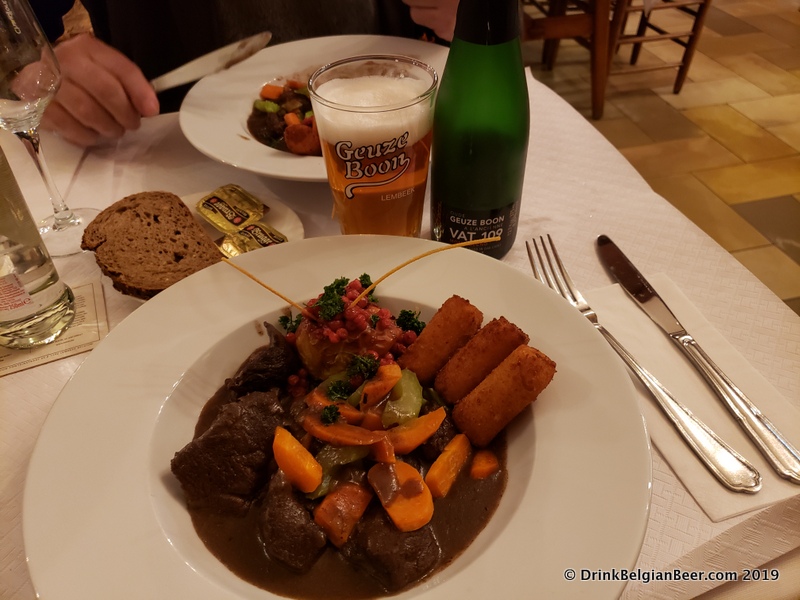

Thomas shared this superb vintage brew with me and two of my friends, Patrick Van der Spiegel and Kurt Verbiest. Patrick is co-founder of “The Land of Geuze” Facebook site, which covers cafes, breweries, and blenderies in Belgium’s lambic country. Patrick lives nearby, and is a local resident in lambic country. After savoring the ’89 Framboos, we then enjoyed a fantastic meal: a stew made with deer, with a sauce prepared with Boon Oude Kriek, carrots, croquettes, and a locally grown apple. It was divine. Thomas suggested to pair the meal with a Brouwerij Boon Oude Geuze Vat 109, a great lambic I have enjoyed on many occasions. Once again, the Vat did not disappoint. It was dry, funky, and complex, with a mild to moderate tartness. A great, refreshing geuze.
About the deer and other game served by the restaurant, Thomas remarked: “Some game is local, some is imported from Poland or Czech Republic.”

After dinner, Thomas suggested we go down into the restaurant’s cellar to pick out another vintage 3 Fonteinen lambic to taste. Patrick and I agreed, and were greeted with one of the most beautiful sights in the beer world: a small space full of aged lambics in one area of the cellar.
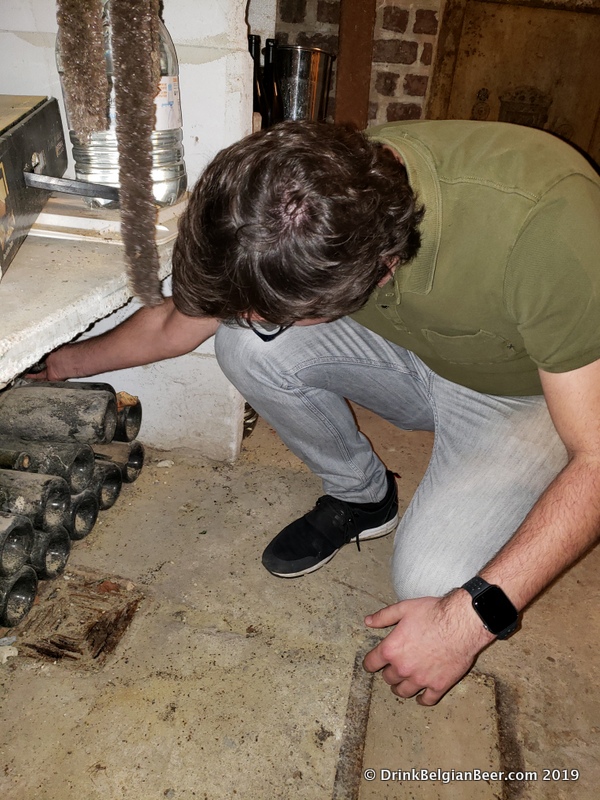
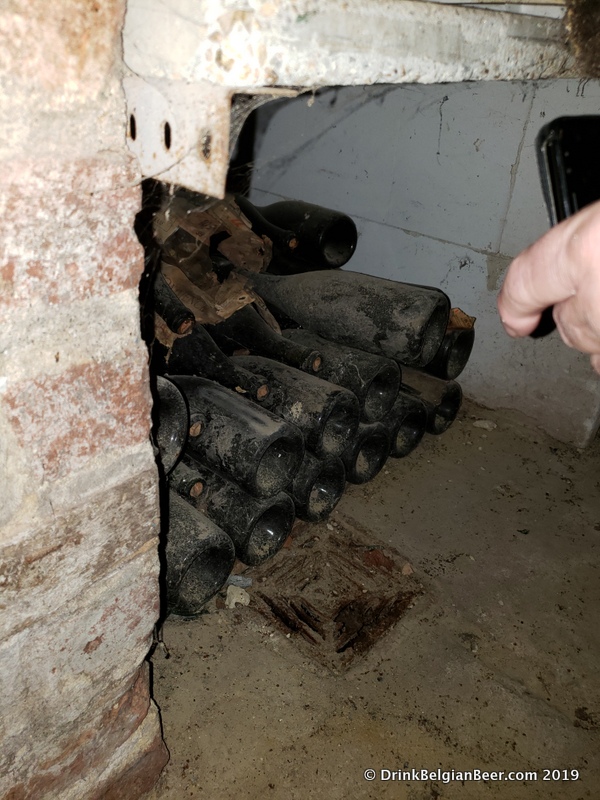
Thomas picked out a bottle that had a good fill level and brought it upstairs to the restaurant bar. The fill level is very important on vintage beers, as the higher the fill level, the better the chance that the lambic inside will be good. Vintage bottles that are only half or 2/3 full are more likely to be oxidized due to cork failure or other factors. The technical term for this is “ullage” which means, for our purposes, the quantity of beer remaining in a container that has lost part of its contents by evaporation, leakage, or use.
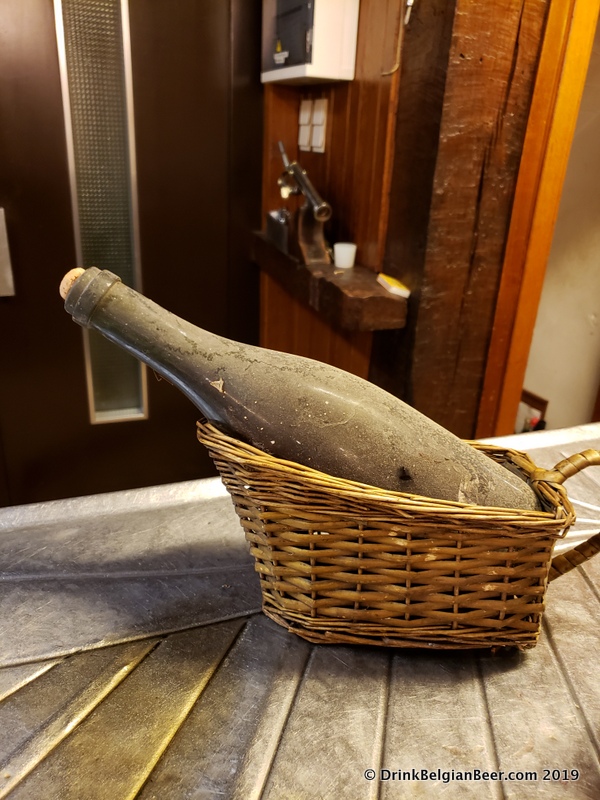
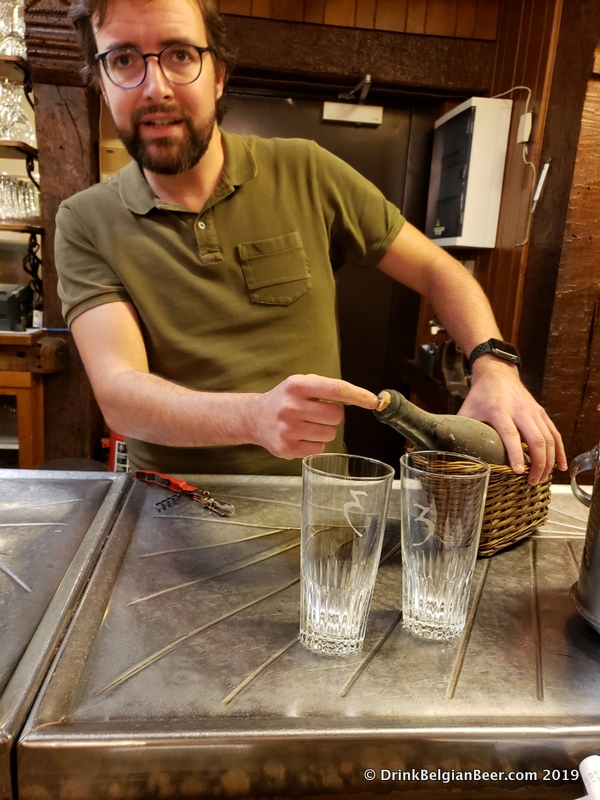
The bottle that Thomas selected and brought up from the cellar with us turned out to be a 1983 3 Fonteinen Oude Geuze. It was the best 36 year old geuze I have ever tasted. It was funky, citrusy, with a great mouthfeel, and with a low to medium tartness, and very complex. I have tasted many old geuzes before, some 40 to 60 years old, and none were anywhere near as bright and fresh as this ’83 vintage. It was mellow in a beautiful way. Thomas Debelder remarked: “These bottles have not moved since they were placed in that spot of the cellar in the 1980’s. Of course, you have to be very careful not to pour any of the sediment into the bottle, as that could, and likely would, change the taste of the beer. Also, we have ideal cellaring conditions here: temperatures are usually about 14 degrees (celsius, so 57 degrees Fahrenheit) in winter, and no more than 16 degrees (61 degrees Fahrenheit) on the hottest summer day.”
***Important note***: these vintage lambics are not on the menu at Restaurant 3 Fonteinen, and are not for sale. The restaurant does have a big selection of lambic beers from most of Belgium’s lambic producers. A meal here, paired with lambics brews, is a real do-not-miss for any lambic lover, or for anyone who enjoys delectable cuisine!

In fact, Restaurant 3 Fonteinen won the Gouden (Golden) Lambikstoemper award from De Lambikstoempers, Belgium’s premier lambic promotion and appreciation club, in late 2019. De Lambikstoempers are based in Belgium’s lambic country, and awarded the prize to Restaurant 3 Fonteinen for their promotion of traditional lambic beers and cooking with lambic beers. In fact, 2019 was the 10th anniversary of the Golden Lambikstoemper award. Thomas remarked: “We are extremely grateful to have received the 10th Golden Lambikstoemper. We are happy that the jury of lambic lovers found our establishment worthy of this honor.”
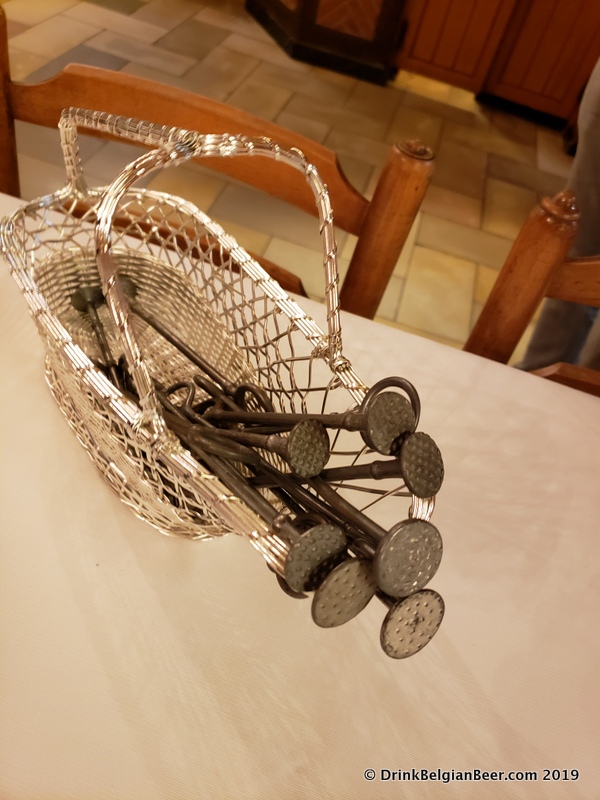
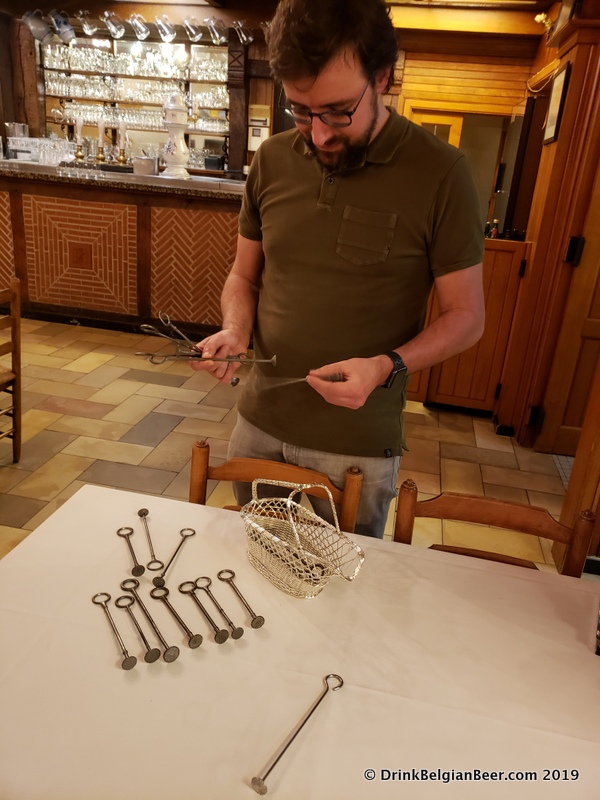
Note: a lambikstoemper is a tool that was used in the past, up to the 1970’s, to crush sugar or some other kind of sweetener into the bottom of a lambic glass, in order to make the sometimes overly sour lambics or fruited lambics of those days palatable to some people. Thomas Debelder showed a small collection of these tools when we visited. See photos.
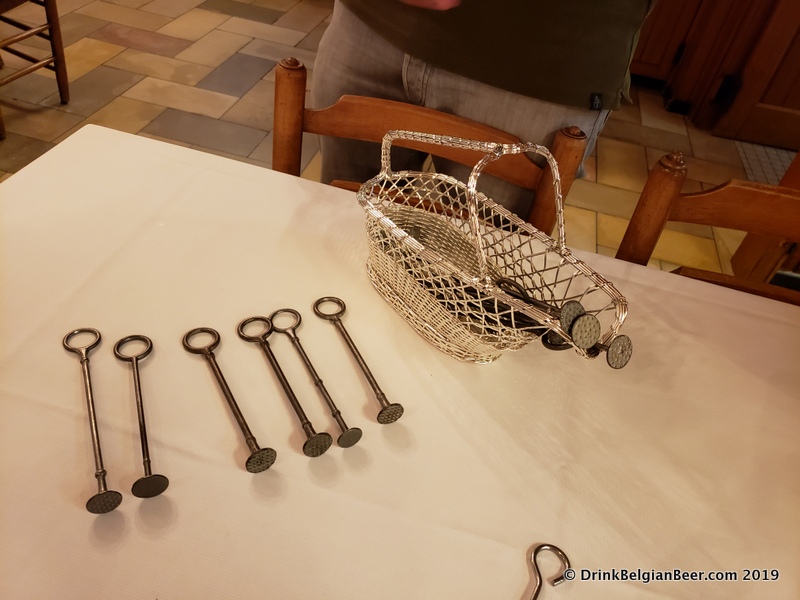
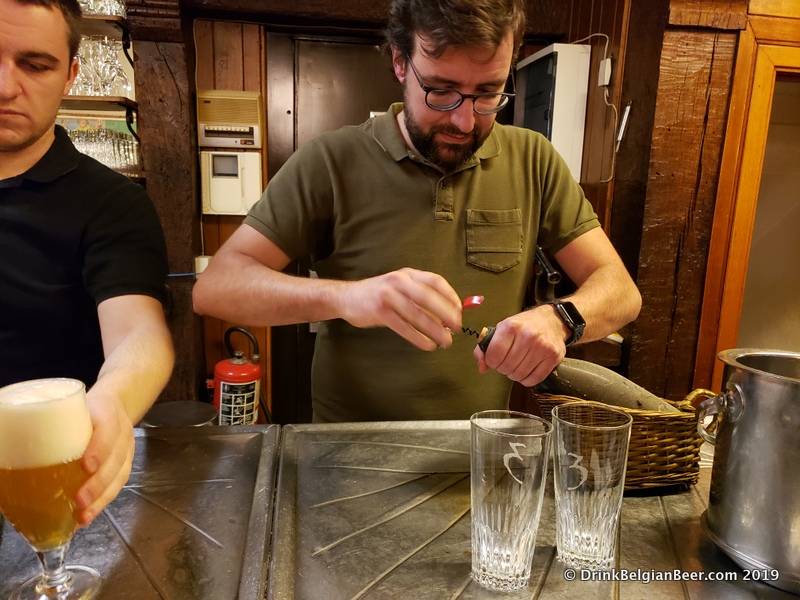

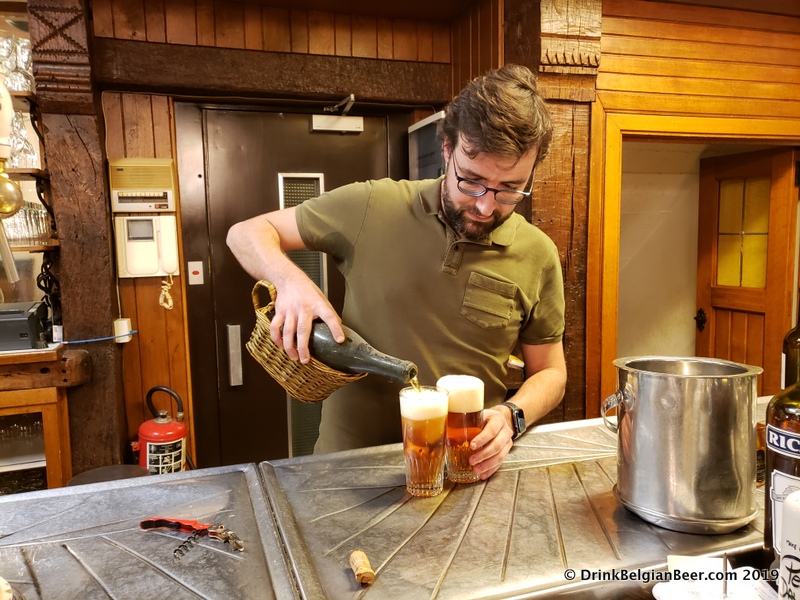
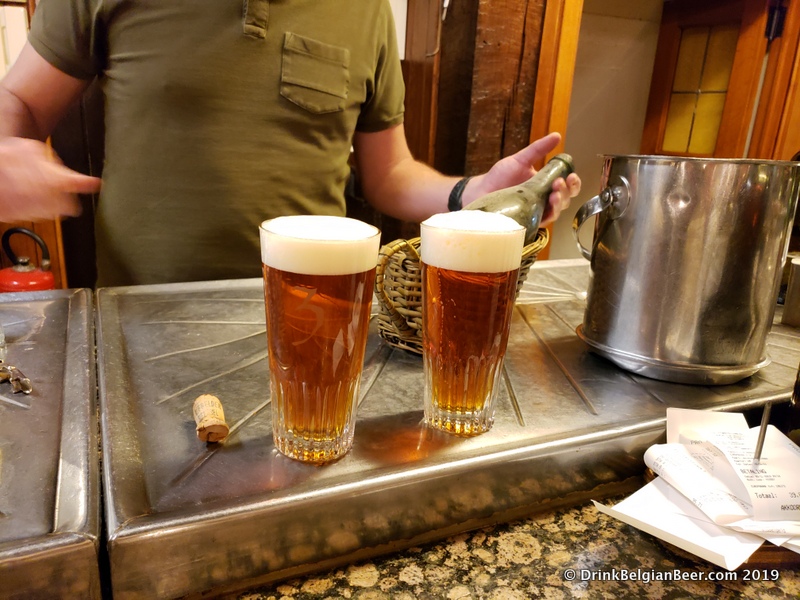

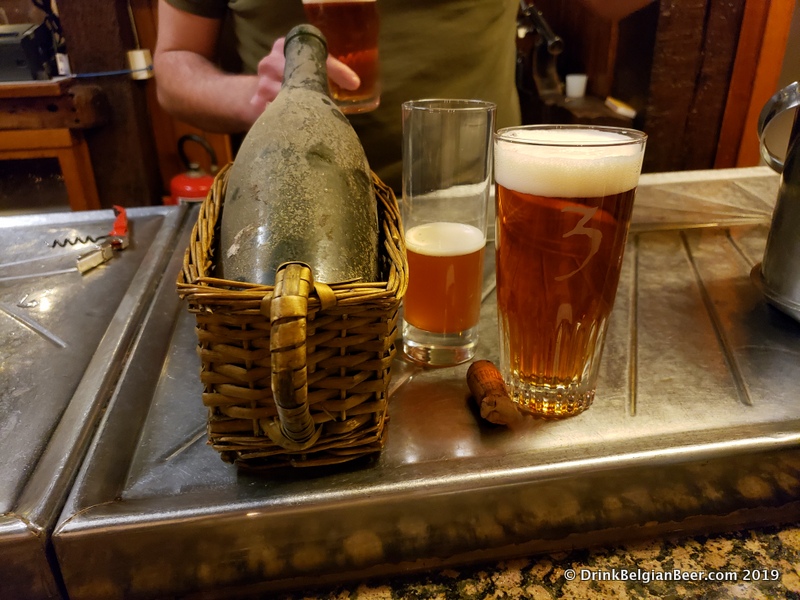
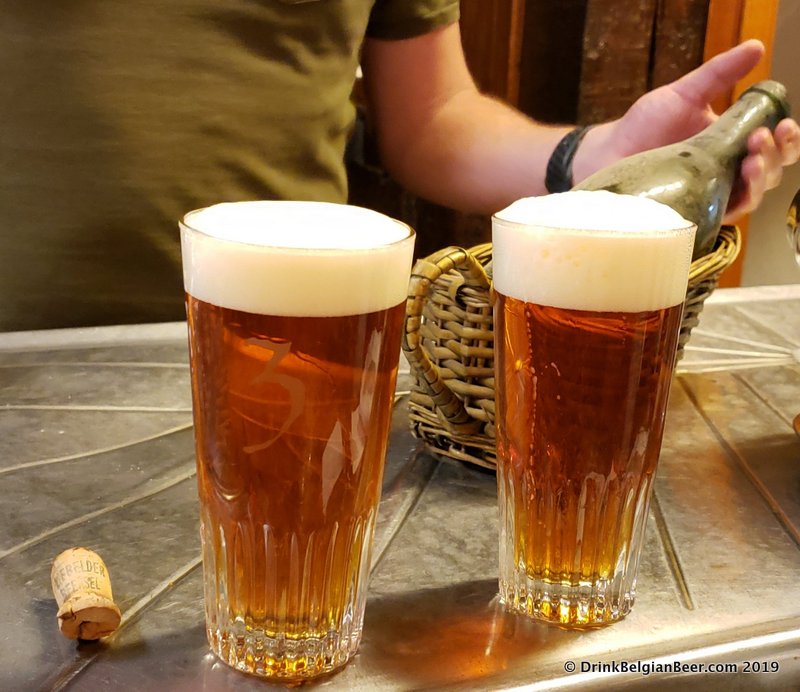
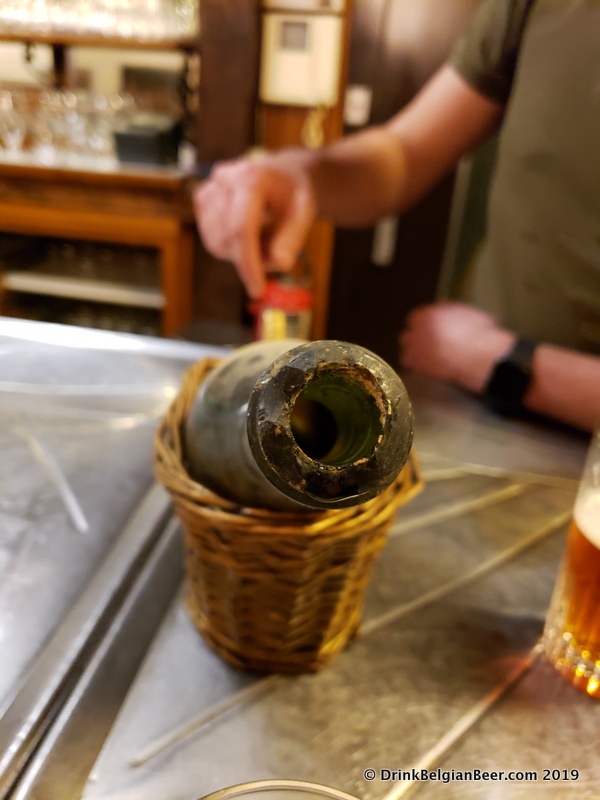
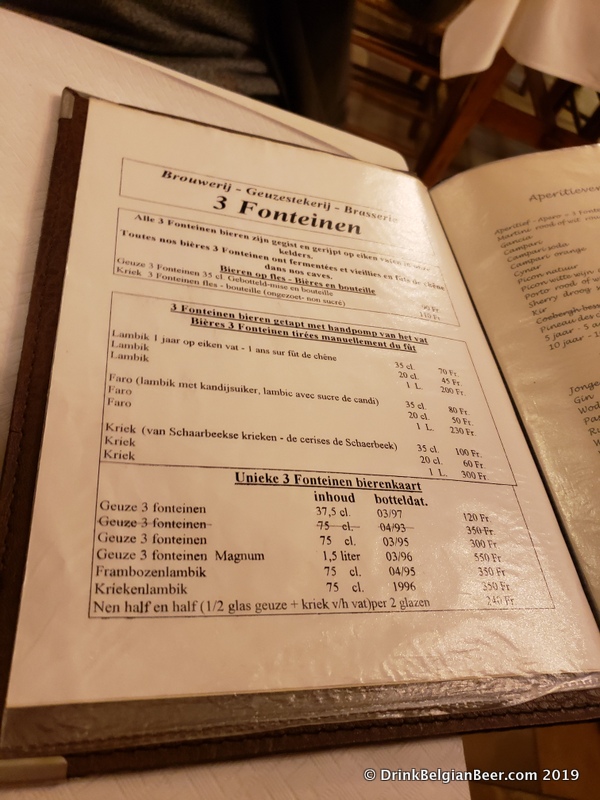
Thomas also showed us an old menu dating to when Belgium still used the Belgian Franc as currency. The euro was introduced January 1, 2002. This menu probably dated from between the late 90’s and 2001.
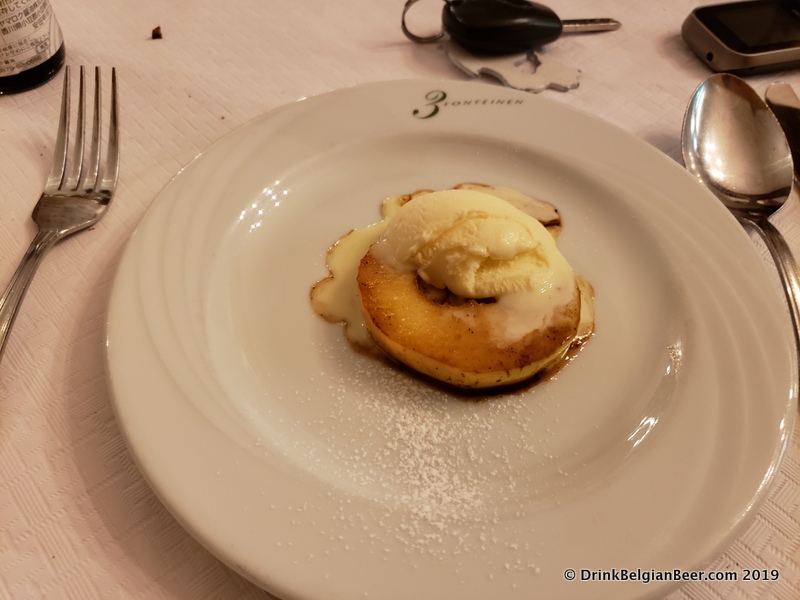
After savoring this incredible geuze, Thomas then suggested we have a small dessert. Restaurant 3 Fonteinen is all about culinary delights, and I have eaten many a meal there. A dessert of a local apple topped with vanilla ice cream and with barrel aged soy sauce from Japan. A sumptuous treat!
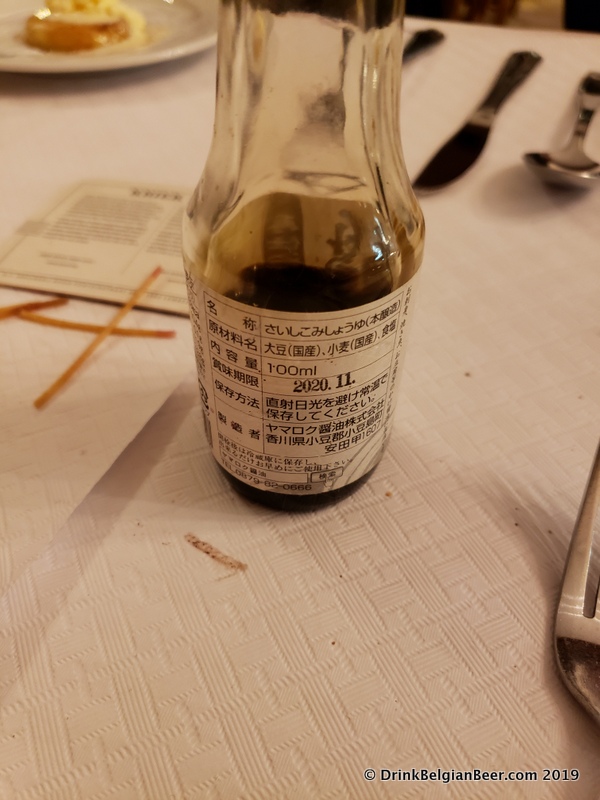
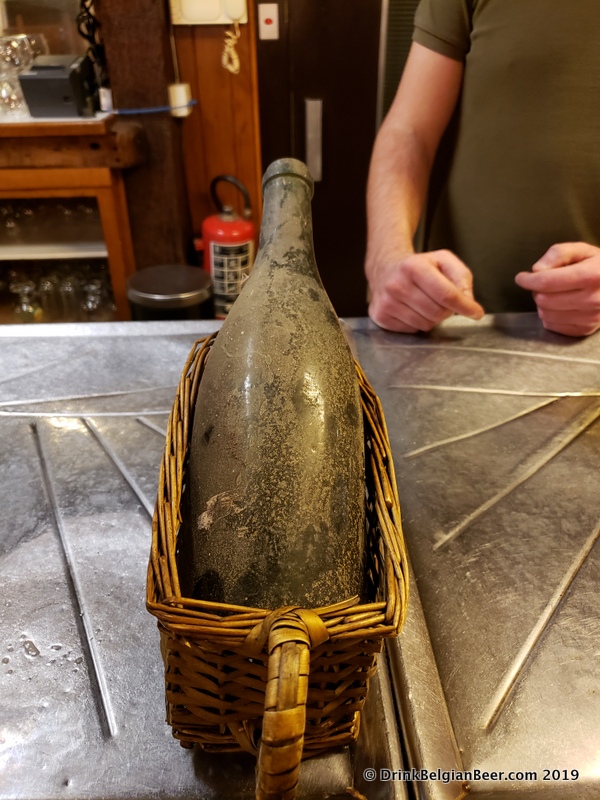
Below, some additional dishes served at Restaurant 3 Fonteinen, during Toer de Geuze week in 2017 and 2019.
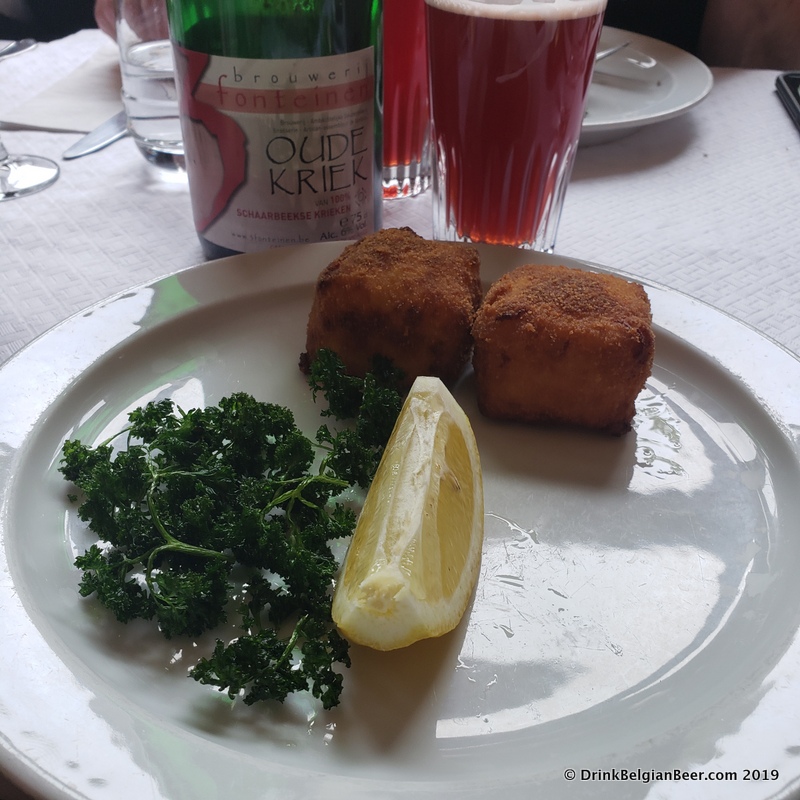
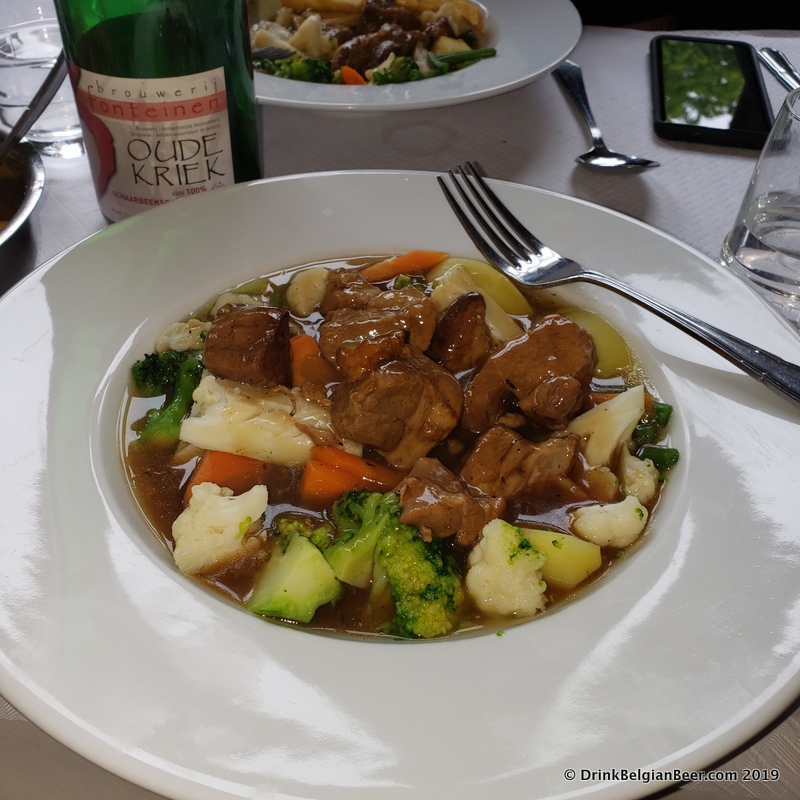
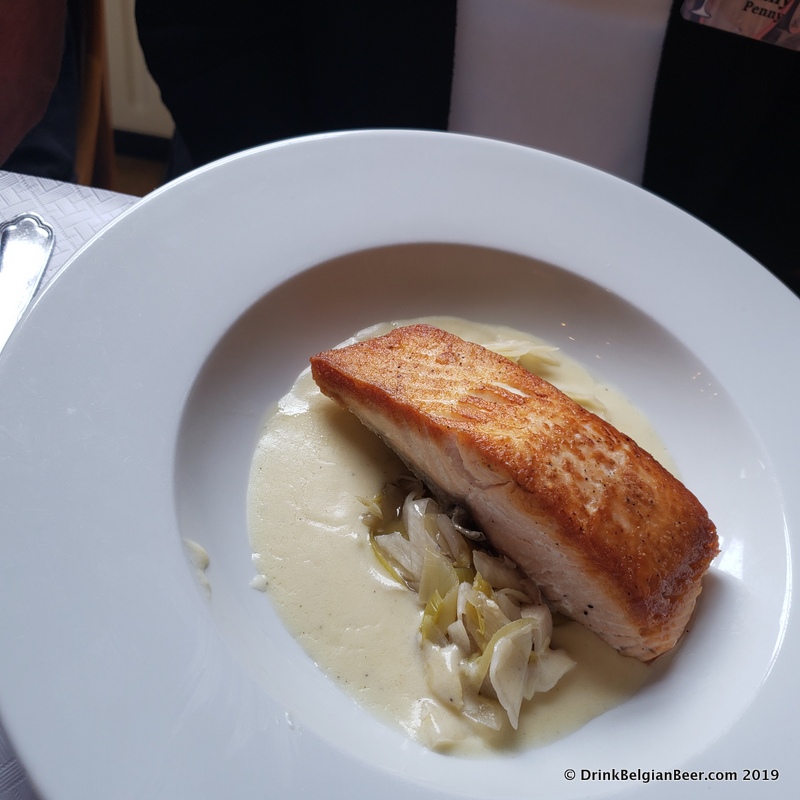

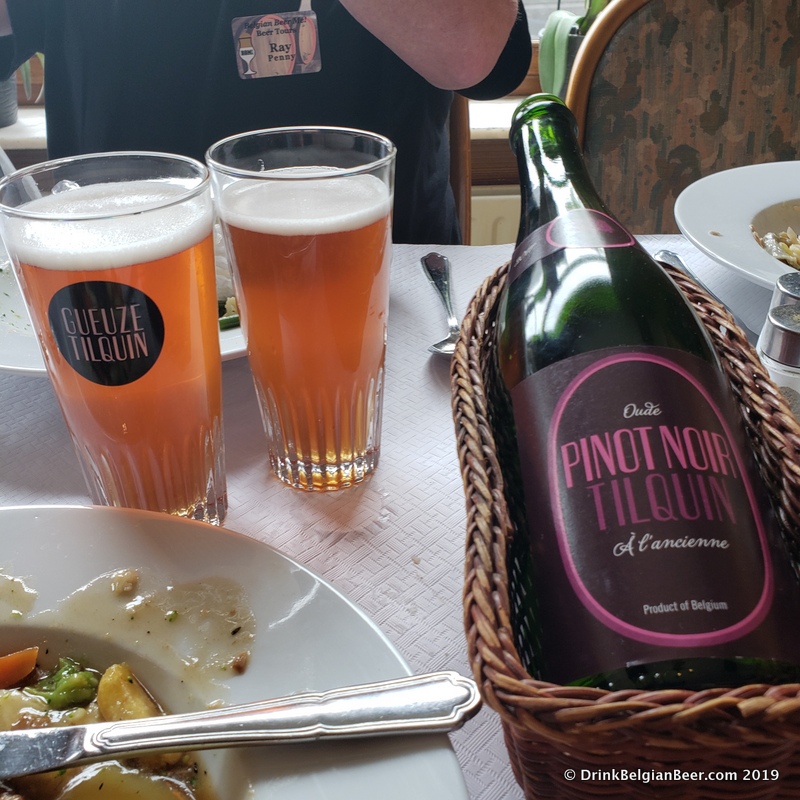


Leave a Reply